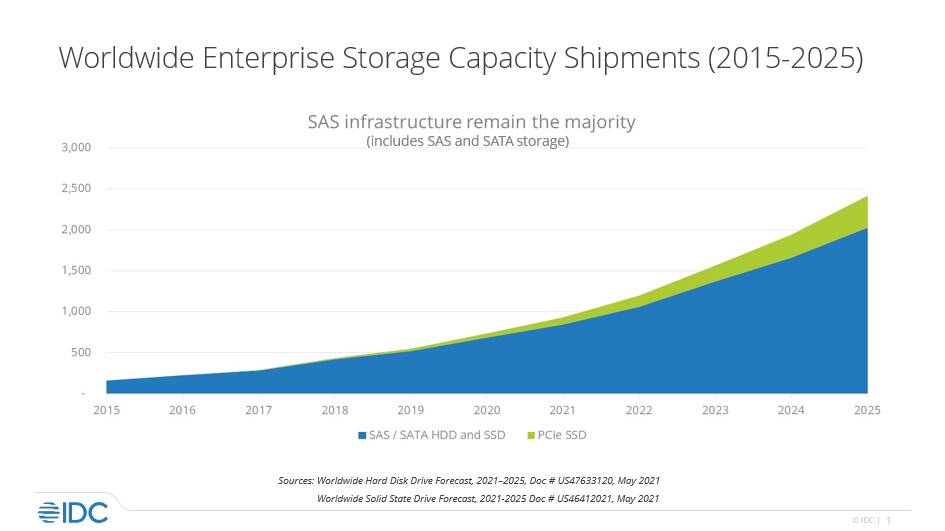
For many of us, we have transitioned ourselves over the past year-and-a-half to be better and healthier, given the challenges that faced us. The SAS interface has gone through its own transformation recently with the latest SAS-4 approved Serial-Attached SCSI specification. While the 24G SAS interface includes enhancements around encoding scheme efficiency and signal integrity, it's the doubling of bandwidth (when compared to the previous 12G interface) that grabs the spotlight for this workhorse interface.
Unlike the PCIe® interface where the NVMe™ protocol focuses on taking advantage of non-volatile solid state memory media performance, the SAS interface is still very much the mature and robust backbone for enterprise and data center storage where performance, fault tolerance and flexible connectivity are its critical benefits. Commercially available SAS hardware RAID (Redundant Array of Inexpensive Disks) options significantly outnumber other interfaces1 and is easily a preferred and trusted way to increase performance and provide data security against drive failure. 24G SAS has the unique capability to not only be backward compatible to more than a decade of legacy storage devices, but it supports SAS and SATA connectivity to both SSD and HDD media. SAS SSD and HDD shipments continue to steadily rise (Figure 12)

With more than 80% of commercially stored capacity still leveraging the SAS infrastructure, doubling its bandwidth was key to maximizing application performance in a diversified environment.
Perhaps flying under the radar in 2020 was the release of KIOXIA’s first ever 24G SAS SSDs, called the PM6 Series. Fast forward to today, and the PM6 Series is now qualified by major OEM server and storage companies, with more qualifications on the way. Like its predecessor, the PM5 Series, the PM6 Series still offers read-intensive, mixed-use and write-intensive endurance options supporting a wide range of workloads, and with capacities ranging from 400 gigabytes3 (GB) to 30 terabytes3 (TB), delivers the right-sized solution for nearly every application and workload.
With NVMe SSDs grabbing lots of attention these days, SAS keeps evolving, keeps getting better with age, and is still the most utilized and trusted interface the storage industry has ever known. Like so many of us are striving for, SAS has achieved the best version of itself.
For more information about PM6 Series and 24G SAS (SAS-4) please visit the product page at the KIOXIA website.
Notes:
1 Source: KIOXIA America, Inc. – Internet survey on hardware RAID options, August 2021.
2 Sources: IDC – ‘Worldwide Hard Disk Drive Forecast,’ 2021–2025, Doc # US47633120, May 2021 and ‘Worldwide Solid State Drive Forecast,’ 2021-2025 Doc # US46412021, May 2021.
3 Definition of capacity - KIOXIA Corporation defines a kilobyte (KB) as 1,000 bytes, a megabyte (MB) as 1,000,000 bytes, a gigabyte (GB) as 1,000,000,000 bytes and a terabyte (TB) as 1,000,000,000,000 bytes. A computer operating system, however, reports storage capacity using powers of 2 for the definition of 1Gbit = 230 bits = 1,073,741,824 bits, 1GB = 230 bytes = 1,073,741,824 bytes and 1TB = 240 bytes = 1,099,511,627,776 bytes and therefore shows less storage capacity. Available storage capacity (including examples of various media files) will vary based on file size, formatting, settings, software and operating system, and/or pre-installed software applications, or media content. Actual formatted capacity may vary.
PCI Express and PCIe are registered trademarks of PCI-SIG.
NVMe is a registered or unregistered trademark of NVM Express, Inc. PCIe is a registered trademark of PCI-SIG. All company names, product names and service names may be the trademarks of their respective companies.
All company names, product names and service names may be trademarks of their respective companies.